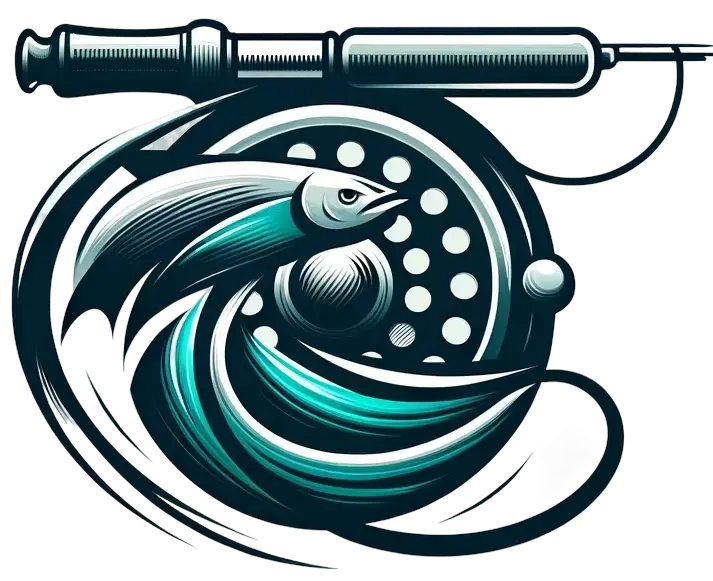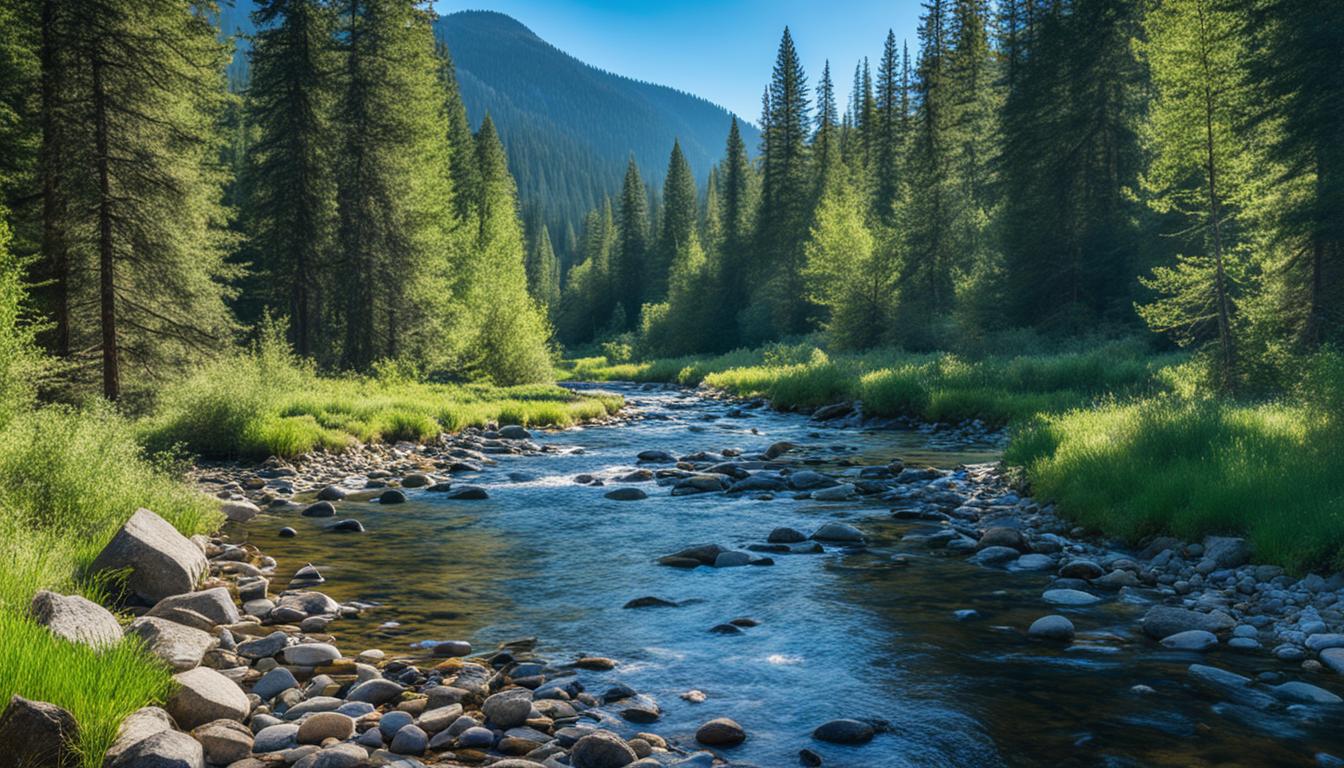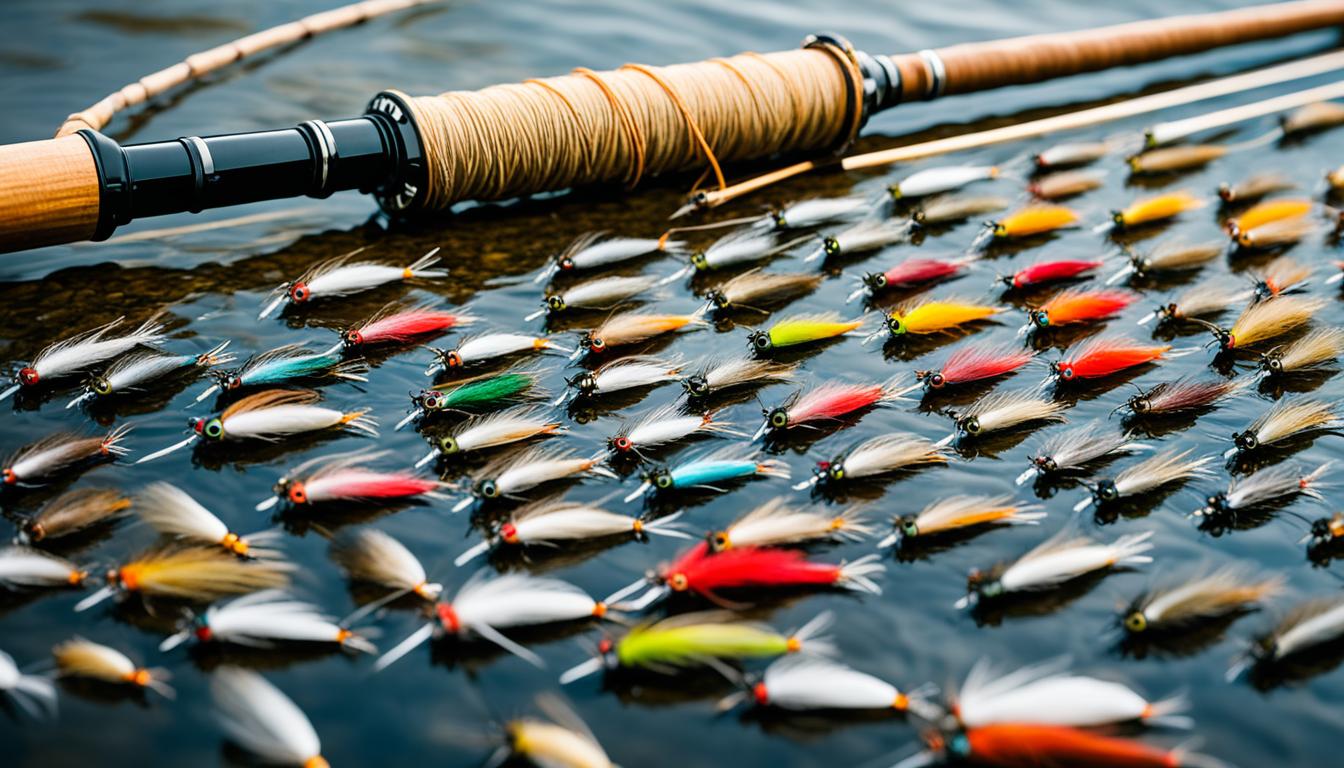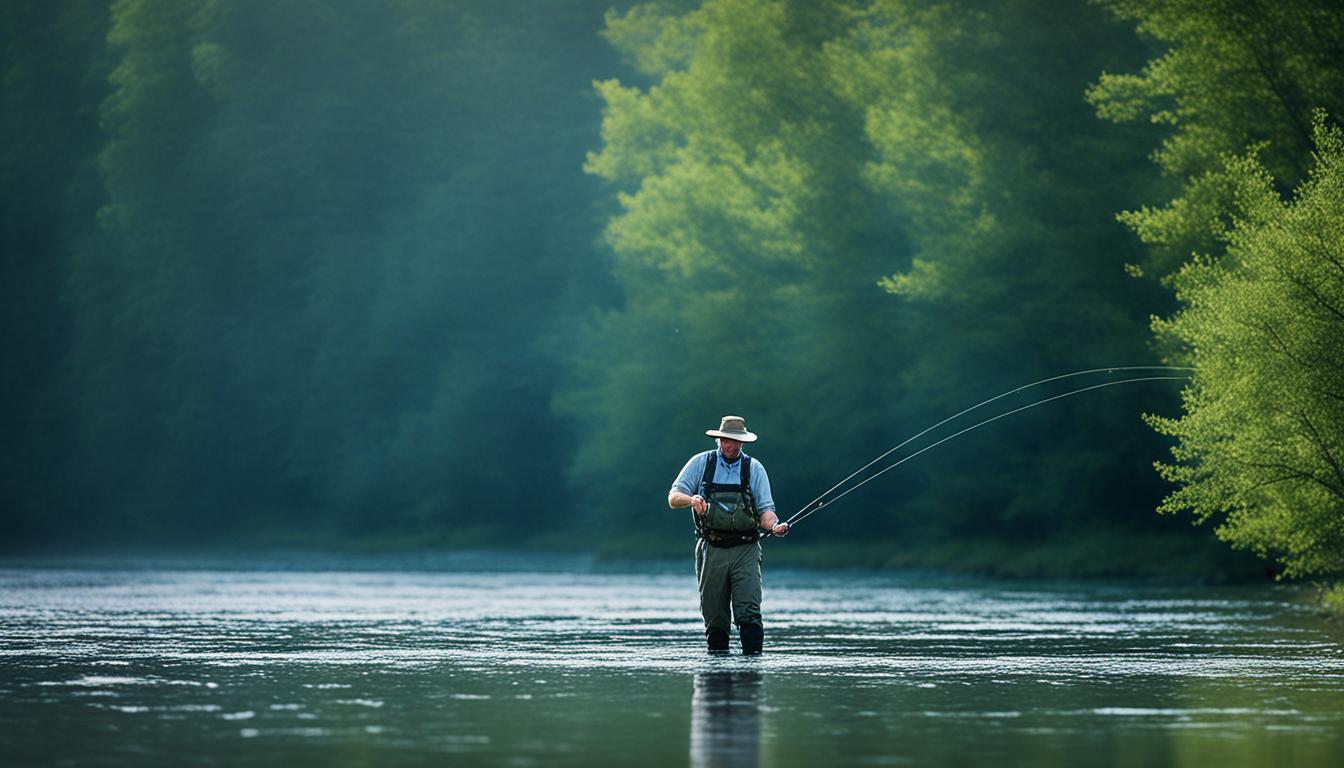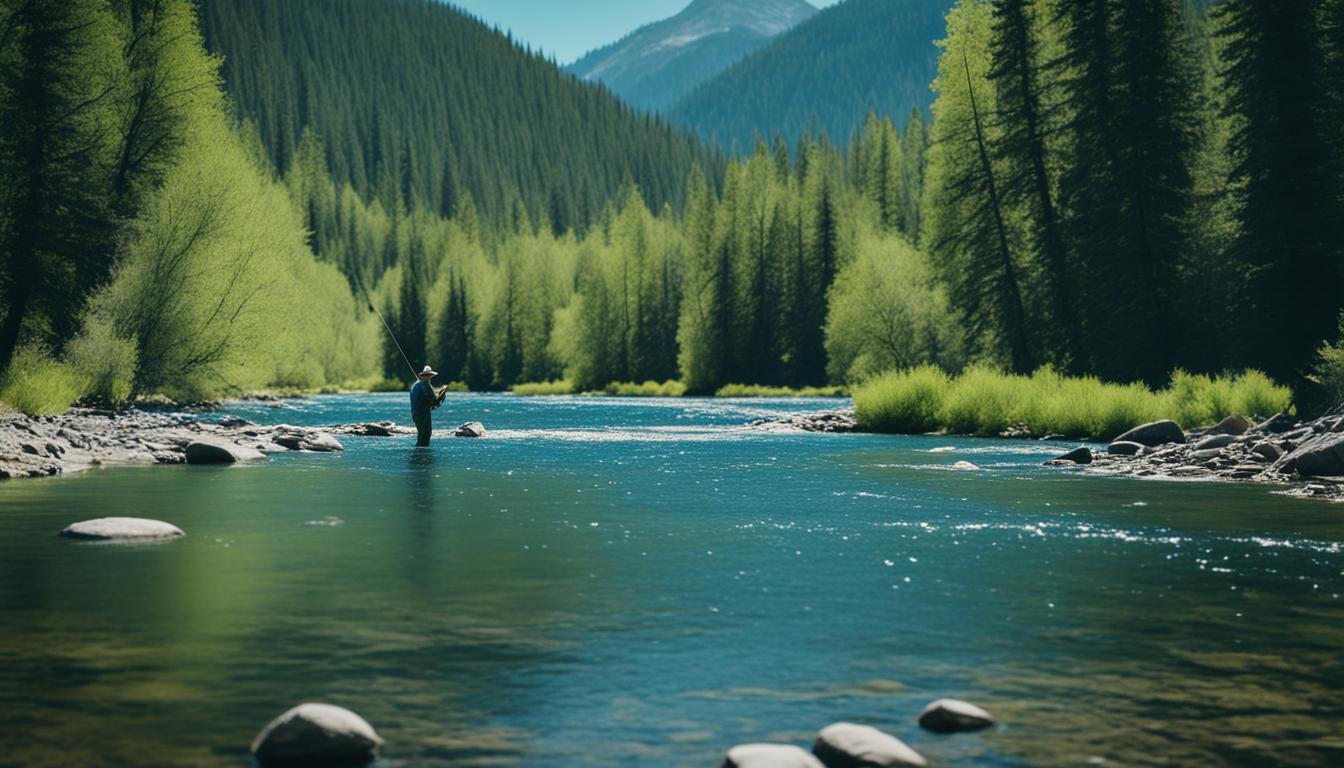Welcome to our angler’s guide to fishing stream confluences! If you’re an avid fisherman looking to enhance your fishing adventures, you’re in the right place. In this article, we’ll dive into the world of fishing stream confluences and discover the best spots and techniques for a successful angling experience.
Key Takeaways:
- Fishing stream confluences offer unique opportunities to catch more fish and enhance your angling adventures.
- Constrictions, such as narrows, rapids, and dams, concentrate fish as they migrate or find prey.
- Confluences, where two streams meet, provide diverse water temperatures and different food sources, attracting a variety of fish.
- Corners, both in shoreline and underwater terrain, create troughs and shoals that concentrate fish migration and predation.
- Utilizing maps, such as bathymetric maps and satellite imagery, can help identify these features and plan fishing trips effectively.
Finding Constriction Fishing Spots
When it comes to finding the best fishing spots, constrictions are key features that anglers should look out for. Constrictions, such as narrows, rapids, dams, and other types of narrow passages, create concentrated populations of fish. These areas act as natural barriers, causing fish to gather and making them easier to target.
Many fish species are drawn to strong currents found in constrictions, as they provide an abundance of food. On the other hand, some fish prefer areas with slower water below the constrictions, where they find shelter and a more oxygenated environment. These factors make constrictions optimal locations for anglers to target various fish species.
Constrictions in lakes and saltwater bodies also attract predatory fish looking for an easy meal. Strong currents and the presence of baitfish make these areas prime hunting grounds.
Analyzing maps, such as bathymetric maps and satellite imagery, can be highly beneficial in identifying constrictions and planning fishing trips to these productive spots. These maps offer insights into the underwater terrain and help anglers pinpoint specific locations where constrictions are likely to be found.
Benefits of Fishing at Constrictions:
- Concentrated fish populations
- Varying water speeds and oxygen levels
- Abundance of food sources
- Attracts predatory fish
By focusing on constrictions, anglers can significantly increase their chances of success on the water. The next section will delve into targeting fishing confluences, another exciting aspect of fishing stream confluences.
| Type of Constriction | Description |
|---|---|
| Narrows | Restricted passage between two areas |
| Rapids | Fast-flowing, turbulent water |
| Dams | Artificial barriers creating changes in water flow |
| Necks | Constricted areas connecting two larger bodies of water |
| Falls | Steep drops in water level |
| Isthmuses | Narrow strips of land connecting two larger land masses |
| Saddles | Depressions between two peaks or ridges |
| Slots | Narrow, elongated passages |
| Channels | Natural or man-made waterways |
Targeting Fishing Confluences
Fishing confluences, where two streams meet, provide unique opportunities for us anglers. These natural junctions offer a combination of diverse water temperatures and different food sources, attracting a wide variety of fish species. Not only do fishing confluences act as staging and ambush locations for migrating fish, but they also serve as ideal spawning grounds.
To successfully target fish at confluences, it’s crucial to understand their behavior and preferences in these dynamic environments. By paying attention to water temperature variations, different insect hatches, and the presence of outmigrating smolt, we can effectively position ourselves to catch fish at these prime fishing spots.
Trout enthusiasts will be pleased to know that fishing confluences are known for their abundance of trout species. The confluence of streams provides a perfect blend of conditions for these freshwater game fish. Additionally, other migratory fish species like salmon and steelhead can also be found in these confluence hotspots.
To maximize our chances of landing a catch at fishing confluences, we can utilize various techniques and tips. Fly fishing, spin fishing, and bait fishing are all viable options depending on the target species and prevailing conditions. Understanding fish behavior, such as their feeding patterns and preferred depths, can help us select the most effective fishing techniques for each confluence we encounter.
Another important consideration when targeting fishing confluences is identifying the primary food sources available in these areas. Since confluences bring together different streams, they often host a wide range of aquatic insects and baitfish. By using imitation flies or lures that mimic the local food sources, we can increase our chances of enticing fish to bite.

Exploring fishing confluences offers us an opportunity to immerse ourselves in nature while indulging in our passion for angling. The excitement of discovering new species, honing our fishing skills, and experiencing the beauty of these confluence locations is what drives us to seek out these prime fishing spots.
Exploring Corner Fishing Spots
When it comes to finding the best fishing spots, corner features in a waterbody offer a promising opportunity for anglers. These corners, such as rocky points, coves, bends, and island points, create favorable conditions for fish migration, predation, and feeding. By understanding the underwater terrain and utilizing mapping tools, anglers can identify and explore these productive corner fishing spots.
Rocky Points and Coves
Rocky points and coves are popular corner fishing spots that attract a variety of fish species. The presence of rocks and submerged structures creates shelter, providing an ideal habitat for fish to hide and ambush their prey. These areas also tend to have a diverse range of aquatic vegetation and offer ample food sources, making them attractive to both small and large fish.
Bends and Island Points
River bends and inshore island points are another type of corner that anglers should explore. These corners often create deep holes, drop-offs, and underwater terrain that act as natural fish magnets. The changes in current flow and water depth create ideal feeding zones for fish, making them prime locations for angling. By targeting these bends and island points, anglers can increase their chances of hooking large, trophy-worthy fish.
Troughs and Shoals
One of the key advantages of fishing corner spots is the creation of troughs and shoals. These underwater formations concentrate fish migration and predation, making them hotspot areas for angling. Troughs, which are deeper sections between corners, often serve as natural highways for fish moving through the waterbody. Shoals, on the other hand, are shallow areas that attract foraging fish in search of food. By identifying and targeting these troughs and shoals, anglers can maximize their catch.
Mapping tools, such as bathymetric maps, are valuable resources for identifying corner fishing spots. These tools provide detailed information on underwater topography, including slopes, drop-offs, and rockpiles. By analyzing these maps, anglers can strategically plan their fishing trips and focus on areas that are most likely to yield successful catches.
“Exploring corner fishing spots can unlock exciting angling opportunities. The concentration of fish, presence of shelter, and diverse food sources make these spots a paradise for anglers seeking a rewarding fishing adventure.”
Next, we will delve into the essential techniques and tips for targeting fishing stream confluences, further expanding our knowledge of prime fishing spots. Stay tuned!
Conclusion
Fishing stream confluences offer anglers unique opportunities to enhance their fishing adventures and catch more fish. By focusing on constrictions, confluences, and corners, we can identify productive fishing spots and target specific fish species. Utilizing mapping tools, such as bathymetric maps and satellite imagery, provides valuable insights into underwater terrain, aiding in effective fishing trip planning.
Understanding the behavior and preferences of fish at confluences is crucial for successful angling. Whether we enjoy fly fishing, casting lures, or drift fishing, the knowledge of fish behavior at confluences can significantly increase our chances of a successful catch.
Exploring fishing stream confluences is an exciting way to discover top fishing destinations and make the most of our angling endeavors. So, let’s grab our fishing gear, apply the angling tips we’ve learned, and embark on fishing adventures that will create lasting memories.
FAQ
What are some key features to look for when searching for fishing spots?
Constrictions such as narrows, rapids, dams, and other types of constrictions are valuable features to look for when scouting fishing locations. These features create concentrated fish populations and provide shelter, oxygenation, and concentrated food sources.
Why are fishing confluences a great spot for anglers?
Fishing confluences, where two streams meet, offer unique opportunities for anglers. Confluences provide diverse water temperatures and different food sources, attracting a variety of fish species. They serve as staging and ambush locations for migrating fish and provide ideal spawning grounds.
What are some corner features that make good fishing spots?
Corner features such as rocky points, coves, bends, and island points create favorable fishing spots. These corners often create troughs and shoals that concentrate fish migration and predation. River bends and inshore sound points are ideal locations to find deep holes and underwater terrain that attract fish.
How can I find constriction fishing spots?
When searching for constriction fishing spots, look for narrows, rapids, dams, necks, falls, isthmuses, saddles, narrows, slots, and channels. These constrictions create concentrated fish populations and are often favored by both predatory and migratory fish.
How can I target fishing confluences effectively?
To target fishing confluences effectively, it’s important to understand the behavior and preferences of fish at confluences. Pay attention to water temperature variations, different insect hatches, and outmigrating smolt. These factors can help you target and catch specific fish species at confluence locations.
What are some underwater features to explore in corner fishing spots?
When exploring corner fishing spots, look for underwater features such as steep slopes, drop-offs, rockpiles, and other types of underwater terrain. These features attract fish species and are ideal locations to target specific fish species.
